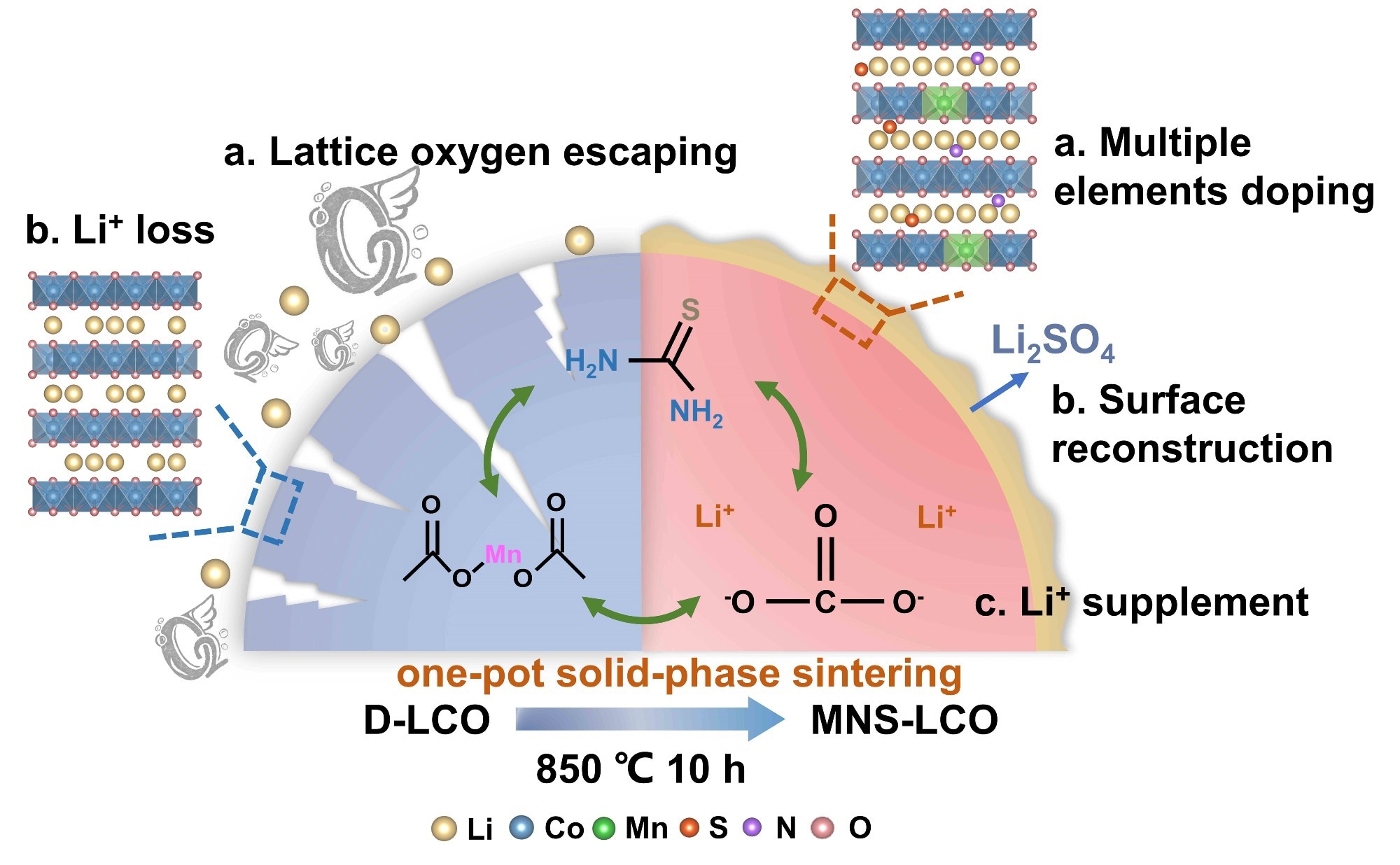A research group from the Hefei Institutes of Physical Science of the Chinese Academy of Sciences, under the direction of Prof. Yunxia Zhang, developed a solid-phase sintering strategy to enable direct conversion of the degraded LiCoO2 (D-LCO) into the high energy density cathode materials.

Schematic illustration for the upcycling procedure of D-LCO cathodes. Image Credit: Zhenzhen Liu
The research was published in the journal Advanced Energy Materials.
To mitigate resource scarcity, lessen environmental pollution, and fulfill the needs for high-energy-density cathode materials, it is crucial to research efficient regeneration and upcycling strategies in light of the impending influx of lithium-ion batteries that have reached the end of their useful lives.
In this study, a straightforward, non-constructive solid-phase sintering method was suggested to regenerate the D-LCO cathode that had degraded and even enhance its stability at high voltages.
“It's like killing three birds with one stone,” noted Prof. Zhang, pointing to the one-pot solid-phase sintering method’s simultaneous integration of lithium supplementation, Li2SO4 coating, Mn doping in Co sites, along with N and S doping in Li-O plates.
In addition to having a high specific discharge capacity of 188.2 mAh/g at 0.2 C, the upcycled cathode outperformed its newly commercialized counterpart in terms of cycling performance, retaining 92.5% of its capacity after 100 cycles at 0.5 C and having excellent rate capability at a high cut-off voltage of 4.5 V.
Various used LCO cathode materials from different manufacturers or with different Li/Co molar ratios could be successfully upgraded into high-performance lithium-ion batteries, demonstrating the method's universality and viability.
Our study provides meaningful guidance for the up-cycling of D-LCO into high energy density batteries with long-term cycling stability, it can also be extended to upgrade other degraded cathode materials into high performance lithium-ion batteries.
Yunxia Zhang, Professor, Hefei Institutes of Physical Science, Chinese Academy of Sciences
Journal Reference
Liu, Z., et al. (2023). Upcycling of Degraded LiCoO2 Cathodes into High‐Performance Lithium‐Ion Batteries via a Three‐In‐One Strategy. Advanced Energy Materials. doi.org/10.1002/aenm.202302058.